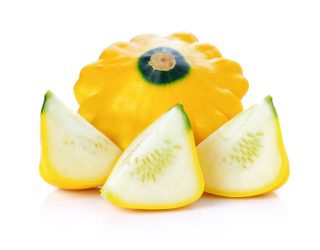

Pattypan squash is a nutritious addition to a dog’s diet, as it is rich in vitamins and minerals and can aid in digestion. However, it should be served in moderation to prevent stomach issues.
Pattypan squash is a great source of vitamins A, C, B6, folate, magnesium, and potassium. These nutrients can help boost a dog’s immune system, metabolism, and bone health.
Overconsumption of pattypan squash can lead to digestive problems, so it should be served in moderate amounts.
To prepare pattypan squash for your dog, peel it and remove the seeds. Steam or roast it until tender. Serve it to your dog occasionally as a treat, in moderation.
Pattypan squash, also known as scallop squash, is a type of summer squash that is a great addition to your dog's diet. Originating from the Americas, it is commonly used in cooking and can be found in most grocery stores. This nutritious vegetable is rich in vitamins A, C, B6, folate, magnesium, and potassium, all of which can provide various health benefits to your dog. However, it's important to remember that overconsumption of pattypan squash can cause digestive issues, so it should be given to your furry friend in moderate amounts.
If you're looking to serve pattypan squash to your dog, it's best to prepare it by peeling off the skin and removing the seeds. Afterward, steam or roast it until it's tender. You can give it to your dog as an occasional treat.
If you're not a fan of pattypan squash, there are other alternatives that can provide similar benefits to your dog's health. Zucchini is a great alternative to pattypan squash and is readily available in most grocery stores. Another alternative is yellow squash, which is also a great source of vitamins and minerals.
Have you tried giving your dog pattypan squash before? How did they like it? Remember to always introduce new foods gradually and in moderation to avoid any adverse reactions. Your furry friend will appreciate the effort you put into providing them with a healthy and well-rounded diet.